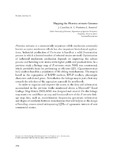Mostrar el registro sencillo del ítem
Mapping the Pleurotus ostreatus genome
| dc.creator | Castellón Gadea, Jordi | es_ES |
| dc.creator | Pisabarro de Lucas, Gerardo | es_ES |
| dc.creator | Ramírez Nasto, Lucía | es_ES |
| dc.date.accessioned | 2018-02-15T10:32:26Z | |
| dc.date.available | 2018-02-15T10:32:26Z | |
| dc.date.issued | 2006 | |
| dc.identifier.isbn | 84-9769-107-5 | |
| dc.identifier.uri | https://hdl.handle.net/2454/27274 | |
| dc.description | Resumen del poster presentado al VI Meeting on Genetics and Cellular Biology of Basidiomycetes (GCBB-VI), organizado por y celebrado en la Universidad Pública de Navarra el 3-6 de junio de 2005. | es_ES |
| dc.description.abstract | Pleurotus ostreatus is a commercially important edible mushroom commonly known as oyster mushroom which has also important biotechnical applications. Industrial production of P.ostreatus is based on a solid fermentation process in which a limited number of selected strains are used. Optimization of industrial mushroom production depends on improving the culture process and breeding new strains with higher yields and productivities. In a previous study a linkage map of P. ostreatus strain N001 was constructed, which provided a basis for performing an efficient QTL (Quantitative trait loci) analysis based in a population of 80 sibling monokaryons. The map is based on the segregation of RAPD markers, RFLP markers, phenotypic characters and cloned genes. Nevertheless the linkage map is just a first step towards the selection of the appropiate parentals for new breeds. In order to organize and improve the access to the data and information accumulated in the previous works mentioned above, a Microsoft® Excel Linkage Map Matrix (MELMM) was designed and created. On this linkage map matrix we could have an easy and functional view of the P. ostreatus linkage map data, such as, recombination frequencies, genotypes information and degree of similarity between monokaryons that will help us in the design of breeding crosses aimed at improving QTLs of agronomic interest of new commercial strains. | en |
| dc.format.extent | 1 p. | |
| dc.format.mimetype | application/pdf | en |
| dc.language.iso | eng | en |
| dc.publisher | Universidad Pública de Navarra / Nafarroako Unibertsitate Publikoa | es |
| dc.relation.ispartof | Antonio G. Pisabarro and Lucía Ramírez (eds.): VI Meeting on Genetics and Cellular Biology of Basidiomycetes (GCBB-VI). Pamplona: Universidad Pública de Navarra / Nafarroako Unibertsitate Publikoa, 2006. | es |
| dc.rights | © Autores; Universidad Pública de Navarra. Esta publicación no puede ser reproducida, almacenada o transmitida total o parcialmente, sea cual fuere el medio y el procedimiento, incluidas las fotocopias, sin permiso previo concedido por escrito por los titulares del copyright. | es_ES |
| dc.subject | Pleurotus ostreatus | en |
| dc.subject | Quantitative trait loci (QTL) analyses | en |
| dc.title | Mapping the Pleurotus ostreatus genome | en |
| dc.type | info:eu-repo/semantics/conferenceObject | en |
| dc.type | Contribución a congreso / Biltzarrerako ekarpena | es |
| dc.contributor.department | Producción Agraria | es_ES |
| dc.contributor.department | Nekazaritza Ekoizpena | eu |
| dc.rights.accessRights | info:eu-repo/semantics/openAccess | en |
| dc.rights.accessRights | Acceso abierto / Sarbide irekia | es |
| dc.type.version | info:eu-repo/semantics/publishedVersion | en |
| dc.type.version | Versión publicada / Argitaratu den bertsioa | es |


